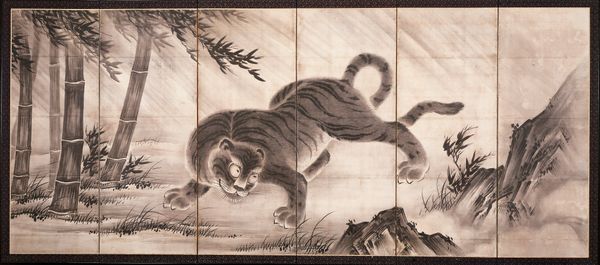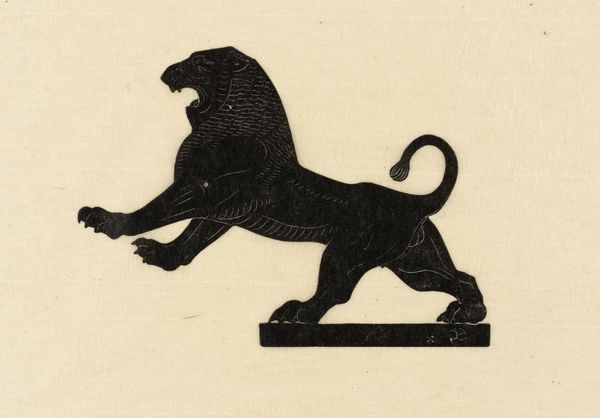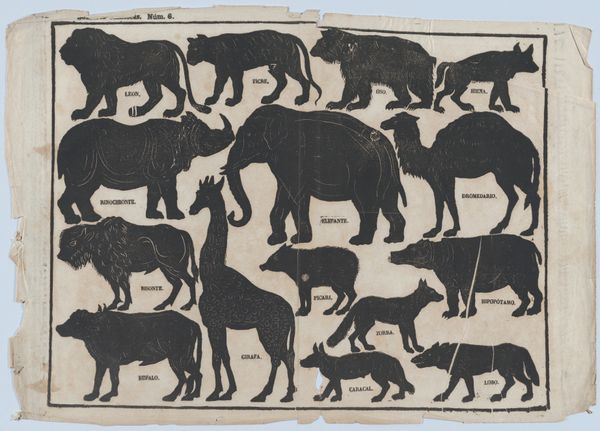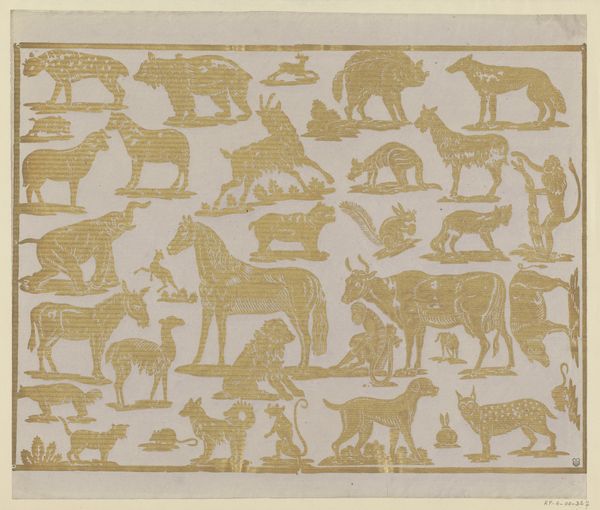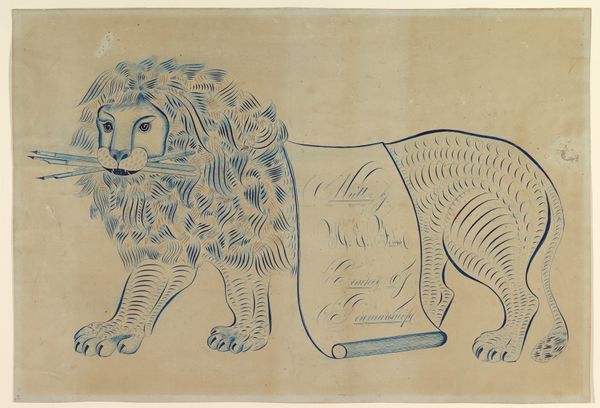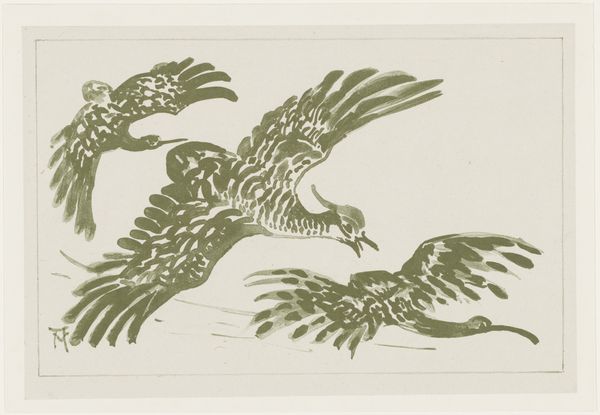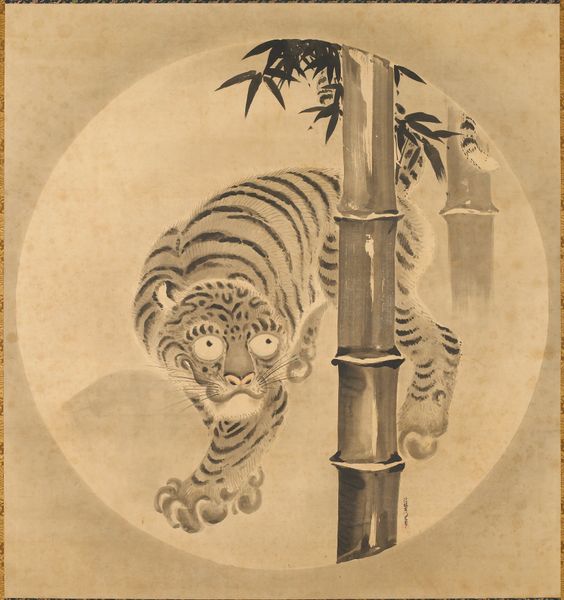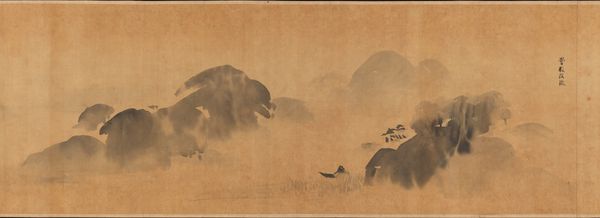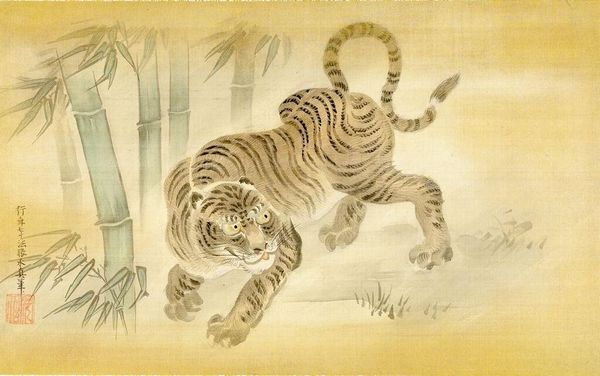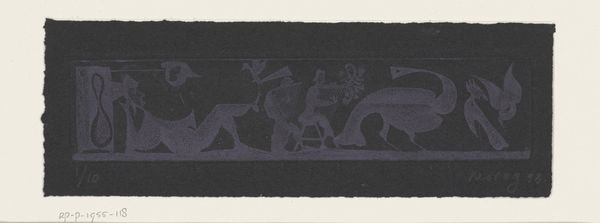
ink-on-paper, ink
#
portrait
#
animal
#
asian-art
#
ink-on-paper
#
ink
#
coloured pencil
#
realism
#
calligraphy
Dimensions: 17 x 52 7/16 in. (43.18 x 133.19 cm) (image)66 3/8 x 61 3/8 in. (168.59 x 155.89 cm) (without roller)
Copyright: Public Domain
Editor: Here we have "Monkeys" created by Mori Kansai in 1887. It's rendered in ink on paper, and it strikes me as being quite realistic, capturing a candid moment of primate life. What stands out to you, as you look at this work? Curator: This piece presents an intriguing look into the social and cultural functions of art in late 19th century Japan. Consider the period: the Meiji Restoration was underway, Japan was rapidly modernizing and grappling with Western influences. How do you think traditional art forms, like ink painting, played a role in negotiating these changes? Editor: Well, it seems like it could be a way of reaffirming Japanese identity. By depicting these monkeys, which are so realistically rendered, is Kansai perhaps commenting on society, maybe reflecting on humanity? Curator: Precisely! The choice of subject matter – monkeys – wasn't arbitrary. Monkeys in Japanese art and folklore can carry rich symbolic meanings, often associated with playfulness, but also with protection against evil. Think about the role of art within society at that moment, during that transitional time. Why show monkeys specifically? And, how might the setting – a museum, a gallery – shape the viewer's interpretation of these "Monkeys"? Editor: That's a fascinating point. By displaying this artwork, is the institution elevating a traditional style, reinforcing cultural values perhaps, in the face of Western influence? It's almost like the museum becomes a stage for national identity. Curator: Exactly. The very act of selecting and presenting “Monkeys” in a museum space can be seen as a curatorial statement. These settings help frame the way it's understood. Now how does knowing that impact your initial impression? Editor: It deepens it significantly. I now see "Monkeys" not just as a beautiful artwork, but also as a reflection of complex socio-political forces at play in Meiji-era Japan. Thank you. Curator: My pleasure, it's vital to think about the politics of imagery, because the cultural institutions shape our perception of art as well as cultural identity.
Comments
minneapolisinstituteofart almost 2 years ago
⋮
Mori Kansai was the grandson of Mori Sosen (1747–1821), who was famous for his paintings of monkeys—including a work hanging nearby. Kansai chose the same subject for this painting, but his approach was much looser and more spontaneous. Kansai used a wide, flat brush and did not render the hair as finely and meticulously as his grandfather did.
Join the conversation
Join millions of artists and users on Artera today and experience the ultimate creative platform.
